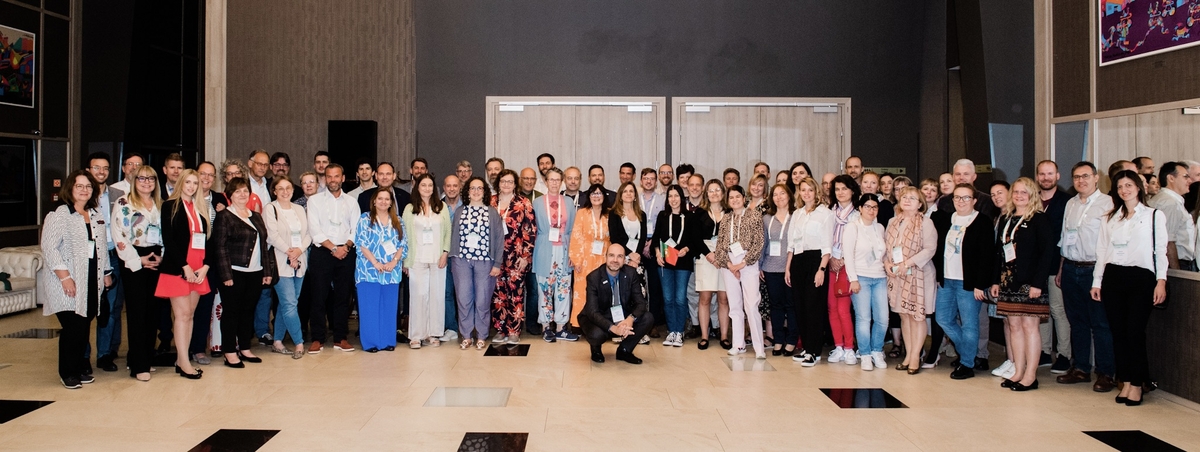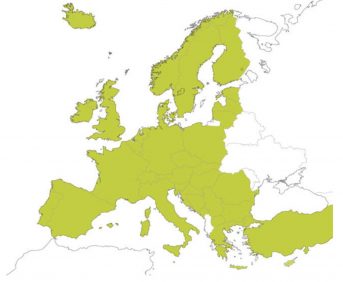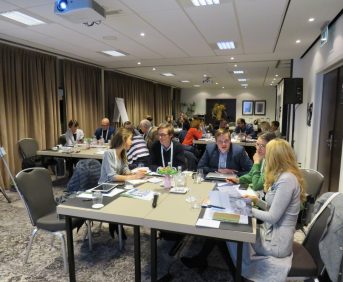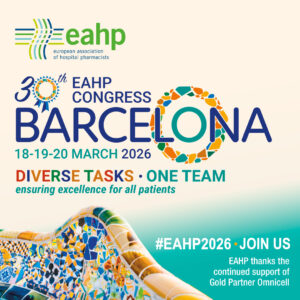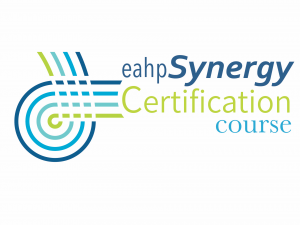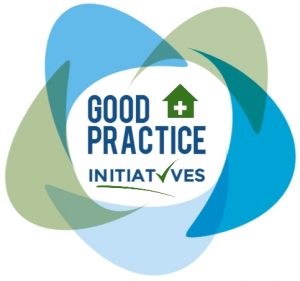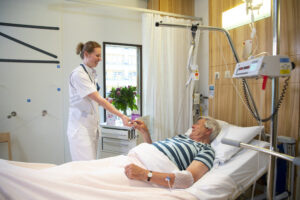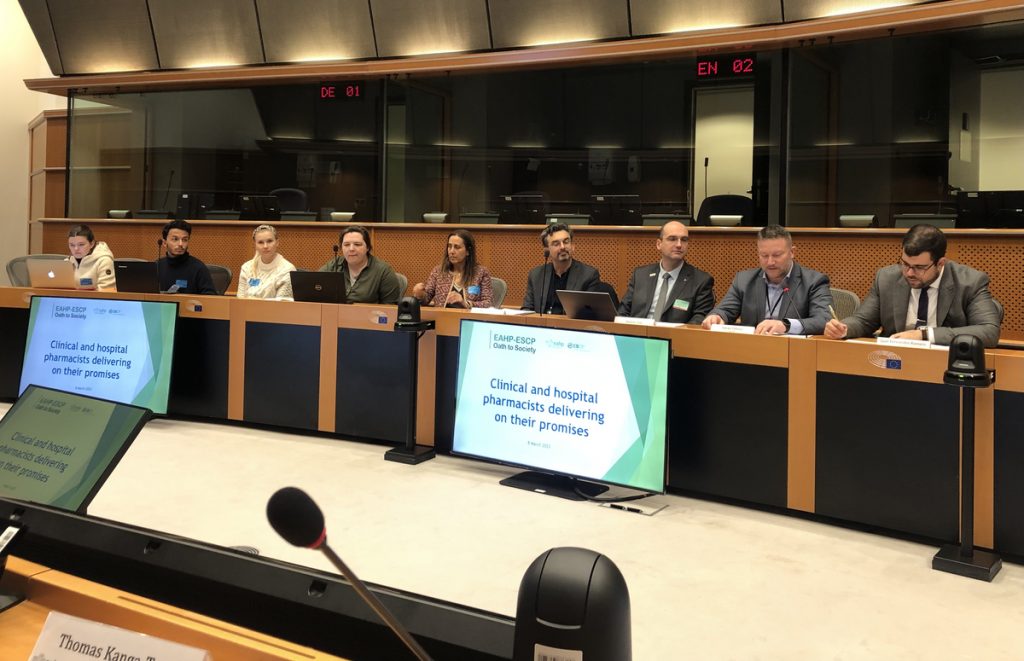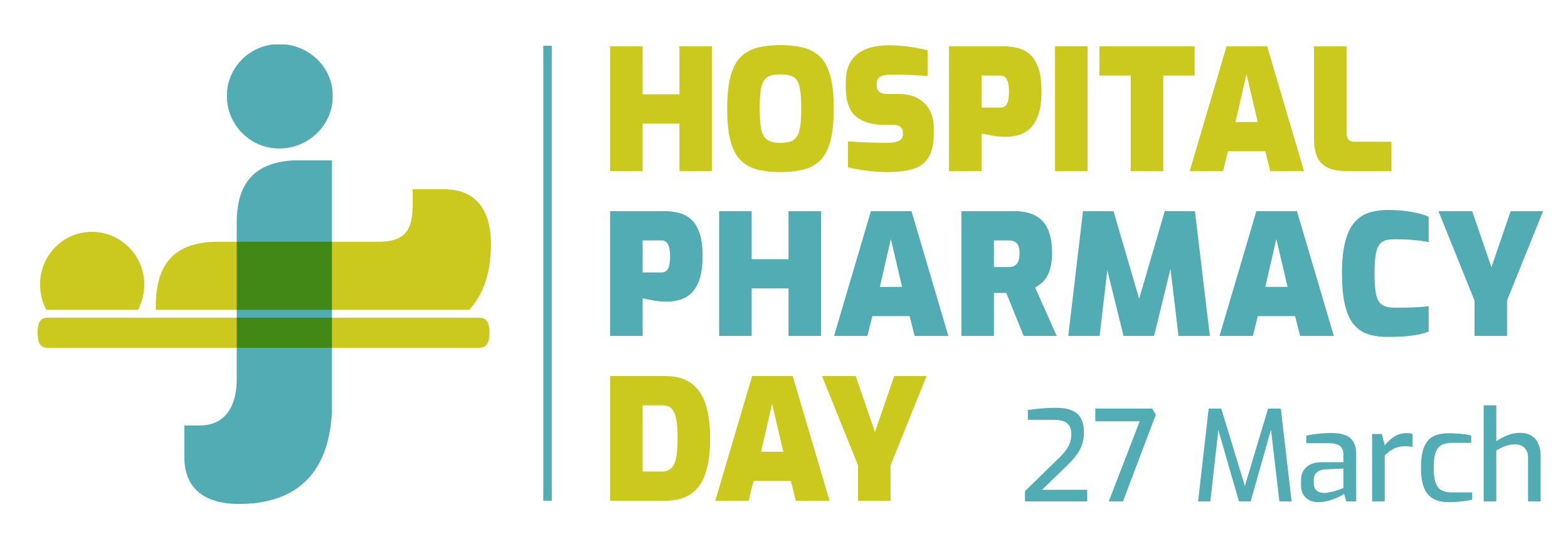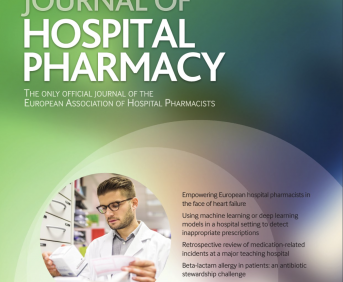Stewardship initiative for COVID-19 monoclonal antibodies led by clinical pharmacists
European Statement
Clinical Pharmacy Services
Author(s)
Petra Rozsívalová, Věra Zdanovcová, Lenka Beková, Martina Maříková, Marcela Heislerová, Vladimír Koblížek, Petr Šmahel
Why was it done?
By implementing systematic monitoring in our institution, CPs ensure appropriate and safe use of unlicensed treatment available under Emergency Use Authorisation. The secondary goal is mandatory data input to national register and patient clinical outcome feedback to physicians and hospital management.
What was done?
It is vital to bring focus on appropriate use of COVID-19 monoclonal antibodies (mAbs) in high-risk population when safety and efficacy data are scarce. A team of clinical pharmacists (CPs) helped to set up process flow, monitor prescribing of mAbs and provide systematic follow-up on time course of symptoms reported by SARS-COV-2 positive outpatients since March 2021.
How was it done?
Ethics committee approval was obtained for monitoring of patients. Consented patient data are extracted from electronic prescribing system and patients score subjective symptoms using questionnaire on days 7, 29 and 90 after the infusion. The prescriber, indication criteria, infusion application day with regards to PCR positivity and symptom onset and vaccination status are recorded.
What has been achieved?
Currently our small dataset includes 59 bamlanivimab and 63 casirivimab/imdevimab patients. On average, mAbs are administered within 2 days of positive PCR test and 5 days of COVID-19 symptoms onset. Our patients report subjective improvement in symptoms by 7 days post infusion. None of our patients clinically deteriorated because of COVID-19. 100 % of mAbs administered are reported in the national database. In October 2021 we achieved that laboratory confirmed positive patients receive text message with infectionist contact to discuss eligibility for mAbs on 24/7 basis. CPs also implemented information leaflets on mAbs for patients with chronic conditions.
What next?
To date, there are no published descriptive data on real-life utilisation of COVID-19 mAbs in terms of patient characteristics, disease outcome and vaccination status. Our initiative shows na excellent opportunity for CPs to enhance timely and rational mAbs use.
AN ITERATIVE APPROACH TO THE DEVELOPMENT OF PHARMACOLOGICAL MANAGEMENT GUIDELINES FOR THE TREATMENT OF PAEDIATRIC INFLAMMATORY MULTISYSTEM SYNDROME – TEMPORALLY ASSOCIATED WITH SARS-CoV-2
European Statement
Clinical Pharmacy Services
Author(s)
CAROL ANN JONES, NANNA CHRISTIANSEN
Why was it done?
Starting in mid-April 2020 as a result of the Coronavirus pandemic, a cluster of patients displaying multisystem inflammation and shock were admitted to our hospital. Similar cohorts have subsequently been reported internationally. Over a 6 week period, in which our institution cared for over 70 children with the newly described PIMS-TS, we developed new pharmacological treatment guidelines. Due to the novelty of the disease, treatment options were unclear and decisions were made by a multidisciplinary team (MDT) of clinicians and pharmacists.
What was done?
This good practice initiative describes the rapid and iterative development of a treatment pathway for the newly described Paediatric Inflammatory Multisystem Syndrome – Temporally associated with SARS-CoV-2 (PIMS-TS). Due to the similarity to Kawasaki disease and septic shock, the routine treatments for these conditions were considered as well as the experience of our adult colleagues, especially in terms of anticoagulation and hyper-inflammation seen in patients presenting with COVID-19. This ensured holistic management plans could be made to provide the highest quality of care.
How was it done?
A MDT of clinicians (intensivists, infectious diseases, cardiologists, rheumatologist, haematologists, endocrinologists) and pharmacists arranged daily meetings to discuss admitted patients as well as pulling together information to formulate a treatment guideline to enable the safe management of these patients. Version one of the treatment pathway was approved in April 2020, by beginning of June version 6 was published. The final treatment pathway included intravenous (IV) immunoglobulin, IV methylprednisolone, aspirin, venous thromboembolism (VTE) prophylaxis and immunomodulation therapy including tocilizumab, infliximab and anakinra.
What has been achieved?
A total of 74 patients have been successfully treated against the treatment pathway, and discharged from hospital. Managing a new condition with no published evidence on treatment was a huge challenge, especially given the large numbers and high acuity of patients. Collaborative learning and reflection has enabled us to develop a robust treatment pathway for our patients. We have witnessed MDT working at its best, united with the sole aim of combating this rare condition.
What next?
An ongoing coordinated effort is required to undertake paediatric research to understand PIMS-TS and establish the most effective treatment for this novel disease.

